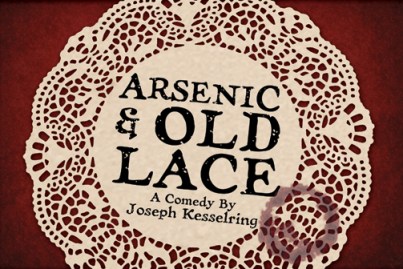
In a cozy Brooklyn apartment, there live two kind-hearted and charitable old ladies. They are caring towards their family and community and try their best to help others. However, when a series of old men come to the house and express their feelings of loneliness, these two ladies murder them by tricking them into drinking poisonous home-made wine. They feel innocent as they believe that they are killing with good intentions.
“Arsenic and Old Lace,” written by the American playwright Joseph Kesselringast, is now being shown at the Players’ Club of Swarthmore. The show lasts approximately three hours and will run for a total of ten performances. Tickets are still available for performances from October 27 to October 30 and from November 3 to November 5.
Most people know “Arsenic and Old Lace” from the 1944 film adaptation directed by Frank Capra that stars Cary Grant. However, delicately decorated stage props, profound and interesting dialogues and vivid and emotional actors and actresses aren’t just in the movie. Though most of the performers are unpaid amateurs, they delivered a high-level performance. In a video interview on the club’s website, the three main performers shared their understanding of their roles. For instance, Ruth K. Brown, who plays the elder sister, Martha Brewster, explained Martha’s personality: “She’s historically played as a very silly sister. But what intrigues me was during auditions, we presented the role to be a planner, a bit more of the person who saw the big picture and understood what is going on. That gives the character a little bit more than just silly behavior and not understanding the fact of dealing with the men in her life.”
Delores Alfe, a regular audience member of the Players’ Company’s shows, commented on the performance on the Sunday afternoon show. “The set [was] very professional. They’ve done a wonderful job.” Alfe noted the difference between watching a movie and appreciating a live performance. “You are able to interact with the actors and actresses and you are a part of the show,” she said.
Audience members for whom “Arsenic and Old Lace” was their first Players’ Club show had similar feelings. Kelly Miller from New Jersey also considered this performance interesting. “The set was incredible,” she said. “Especially the two ladies, they are fantastic.” She added, “The live performance makes everything a little bit more involved and enthusiastic.”
Every play tells a story. It can be a reflection of a past time period and it can recall the memory of people nowadays. Director Bridget Dougherty wrote in her director’s note, “[the play] also displays a time long forgotten and an innocence lost in a Brooklyn neighbourhood, a time when you knew the name of the cop that walked the beat on your street, a time when you left your door unlocked, a time you actually checked in on your neighbors.”
According to Paul Kerrigam, the producing director in the Club, and George Ainslie, one of the several people who directs the plays in the theater, there are several different shows spanning over a hundred performances in the theater every year. To satisfy audiences of different ages, the theater produces different types of shows that tackle different themes and take place during different time periods. There are a total of seven Main Stage shows this year, including “Over the River and Through the Woods,” “Arsenic and Old Lace,” “Crazy for You,” “The Beaux’ Stratagem,” “I Love You, You’re Perfect, Now Change,” “Our Town” and “Children of Eden.”
“Crazy for You,” for instance, is a musical with music and lyrics by George and Ira Gershwin and a book by Ken Ludwig. It is about a banker’s son looking for a new career and a new fiancée. This musical won the 1992 Tony Award for Best Musical. It will run from November 25 to December 17. Besides these Main Stage performances, audiences can also appreciate the Second Stage shows and others in the Children’s Theatre.
The Players’ Club welcomes Swarthmore students to come and be a part of the production process. As Ainslie mentioned, there are a lot of Swarthmore students who are interested in the plays. Once, a group of students watched “Arcadia,” a play by Tom Stoppard in 1993. After watching the play, they brought it to the Scott Amphitheater later on.
“Therefore, this is a source of ideas, a source of resources and we like students to come here,” he said. “We would like to help if possible and we would like them to help us too if possible, like a natural cooperation.”













